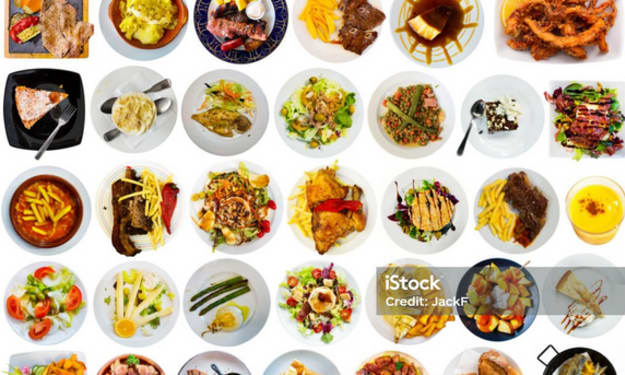
Edible Flowers are taking center stage, n the enchanting realm of gastronomy, transforming dishes into vibrant and visually stunning creations. This culinary phenomenon is a celebration of nature's beauty, intertwining the visual and gustatory senses to create a magical dining experience. Join me on a delightful journey into the world of Edible Flowers, where petals and blooms become the palette for culinary artistry, turning each dish into a floral masterpiece.
Edible Flowers have been part of culinary traditions across cultures for centuries, gracing tables with their beauty and infusing dishes with unique flavors. Today, this trend has evolved into a culinary movement, with chefs and home cooks alike embracing the delicate and aromatic qualities of flowers to elevate their creations. From appetizers to desserts, Edible Flowers have become more than just a garnish; they are an integral part of the culinary narrative.
One of the most captivating aspects of Edible Flowers is their visual appeal. Petals in various hues, from the vibrant orange of nasturtiums to the delicate purple of pansies, add a burst of color to dishes, transforming them into works of art. The artful arrangement of petals on a salad, the subtle infusion of color in a cocktail, or the delicate crystallization of flowers as a dessert garnish—all contribute to the mesmerizing visual symphony that Edible Flowers bring to the dining experience.
Beyond their visual allure, Edible Flowers contribute a range of flavors, from subtle and floral to bold and spicy, depending on the type of flower. Nasturtiums, for example, offer a peppery kick, while violets impart a delicate, sweet essence. Lavender introduces a calming floral note, and pansies bring a mild, grassy flavor. Chefs are exploring the diverse flavor profiles of Edible Flowers, using them to enhance both the taste and aromatic dimensions of their dishes.
One of the magical transformations happening in kitchens is the incorporation of Edible Flowers into unexpected culinary creations. From floral-infused beverages to petals delicately folded into pasta dough, the versatility of Edible Flowers knows no bounds. Mixologists are crafting exquisite cocktails adorned with colorful blooms, and pastry chefs are pushing the boundaries of creativity with floral-inspired desserts that are as enchanting to the eyes as they are delectable to the palate.
Culinary alchemists are also experimenting with the preservation of Edible Flowers, utilizing techniques such as candying, drying, and pickling to extend their availability beyond the blooming season. Candied rose petals adorn confections, dried chamomile flowers infuse teas with subtle floral notes, and pickled nasturtium seeds add a unique twist to savory dishes. These preservation methods not only prolong the culinary use of Edible Flowers but also open up new avenues for incorporating these botanical gems into a variety of dishes.
The resurgence of interest in Edible Flowers is not confined to high-end restaurants; it is permeating diverse culinary landscapes. Farmers' markets, grocery stores, and even home gardens are increasingly offering an array of Edible Flowers for consumers to experiment with in their own kitchens. This accessibility ensures that the enchanting world of Edible Flowers is not limited to culinary professionals but is open to anyone with a passion for culinary exploration.
Edible Flowers are not merely an aesthetic choice; they also bring a wealth of nutritional benefits to the table. Many flowers are rich in antioxidants, vitamins, and minerals, adding a wholesome dimension to dishes. Calendula, for example, is renowned for its anti-inflammatory properties, while violets contribute a dose of vitamin C. Incorporating Edible Flowers into meals is not just a feast for the senses; it's a health-conscious choice that aligns with the growing trend of wellness-driven dining.
In the realm of sustainability, Edible Flowers offer a unique advantage. They are often harvested for culinary use from plants that are already cultivated for other purposes, reducing the environmental impact associated with their production. Additionally, the use of flowers in cooking minimizes food waste, as petals and blooms that might otherwise go unused can be transformed into delightful culinary creations. This eco-friendly aspect of Edible Flowers aligns with the broader movement toward sustainable and mindful eating.
The magical world of Edible Flowers is a testament to the transformative power of nature in the kitchen. It is a trend that invites us to embrace the beauty and flavor diversity that flowers bring to our culinary experiences. From salads and cocktails to pastas and desserts, Edible Flowers offer a canvas for chefs and home cooks to weave a tapestry of visual and gustatory delights. So, let's embark on this culinary journey where petals become palette, and blooms become the brushstrokes in a masterpiece of flavor and beauty—a celebration of the magical alchemy that occurs when nature meets the culinary arts.
About the Creator
Enjoyed the story? Support the Creator.
Subscribe for free to receive all their stories in your feed. You could also pledge your support or give them a one-off tip, letting them know you appreciate their work.





Comments
There are no comments for this story
Be the first to respond and start the conversation.